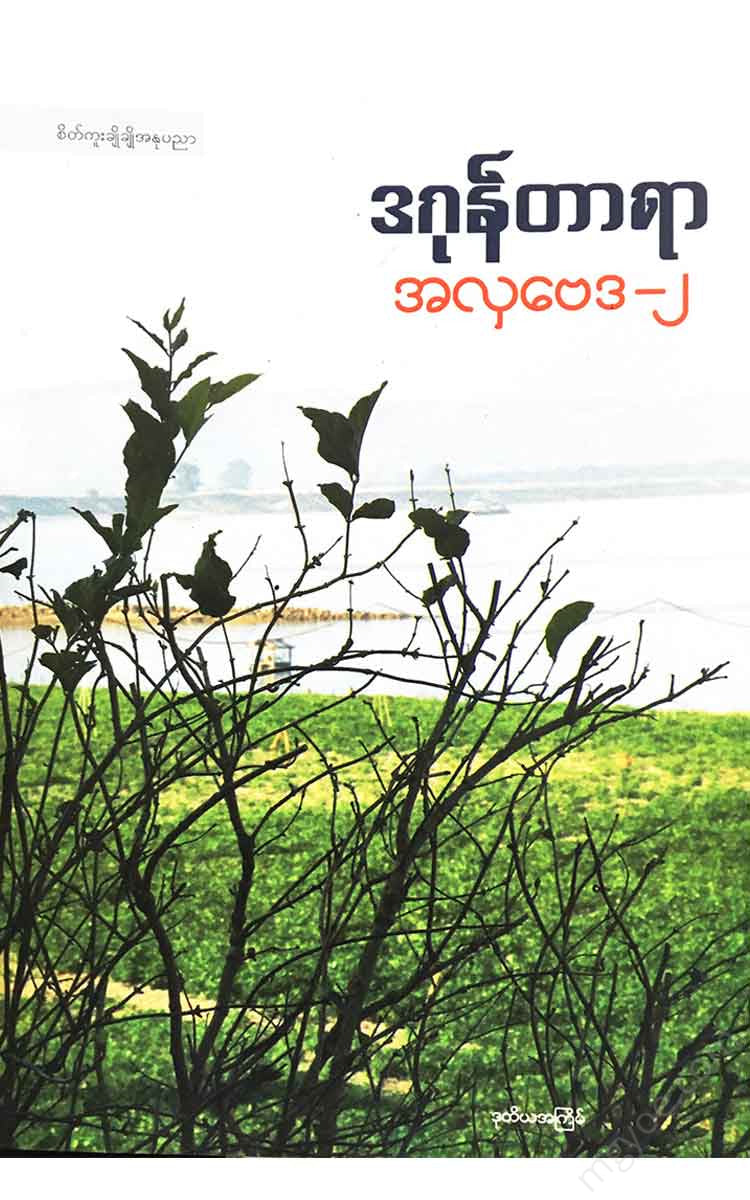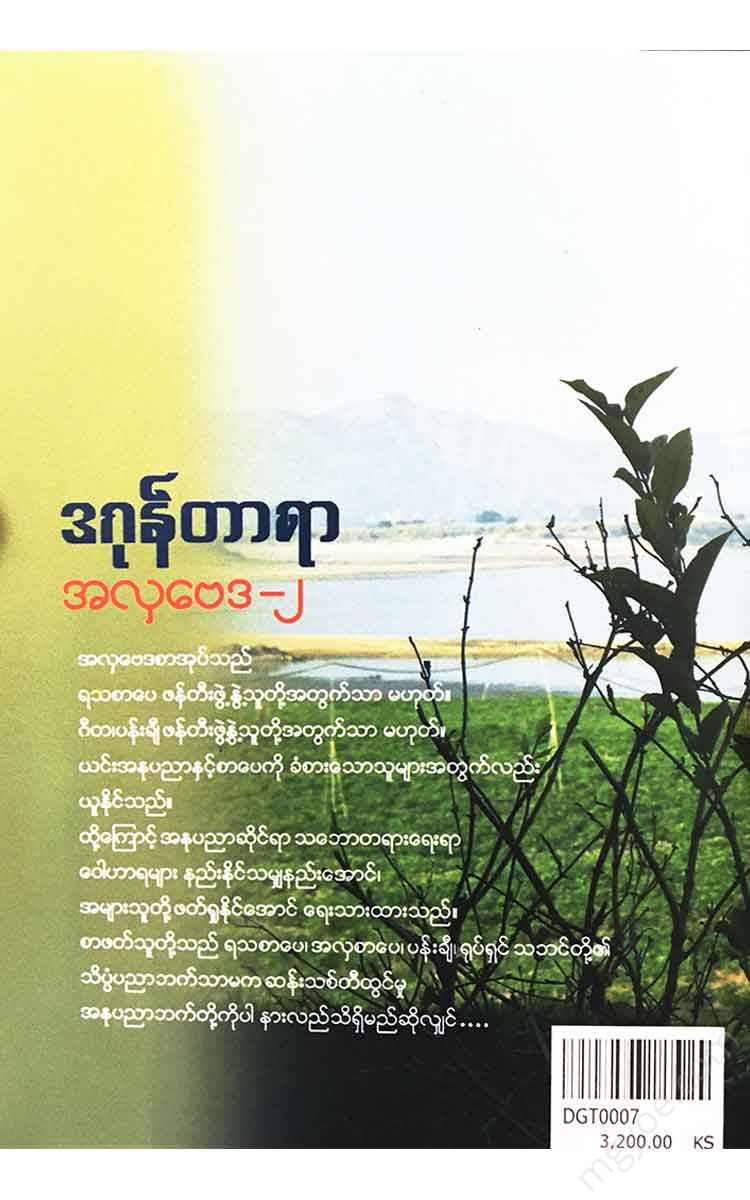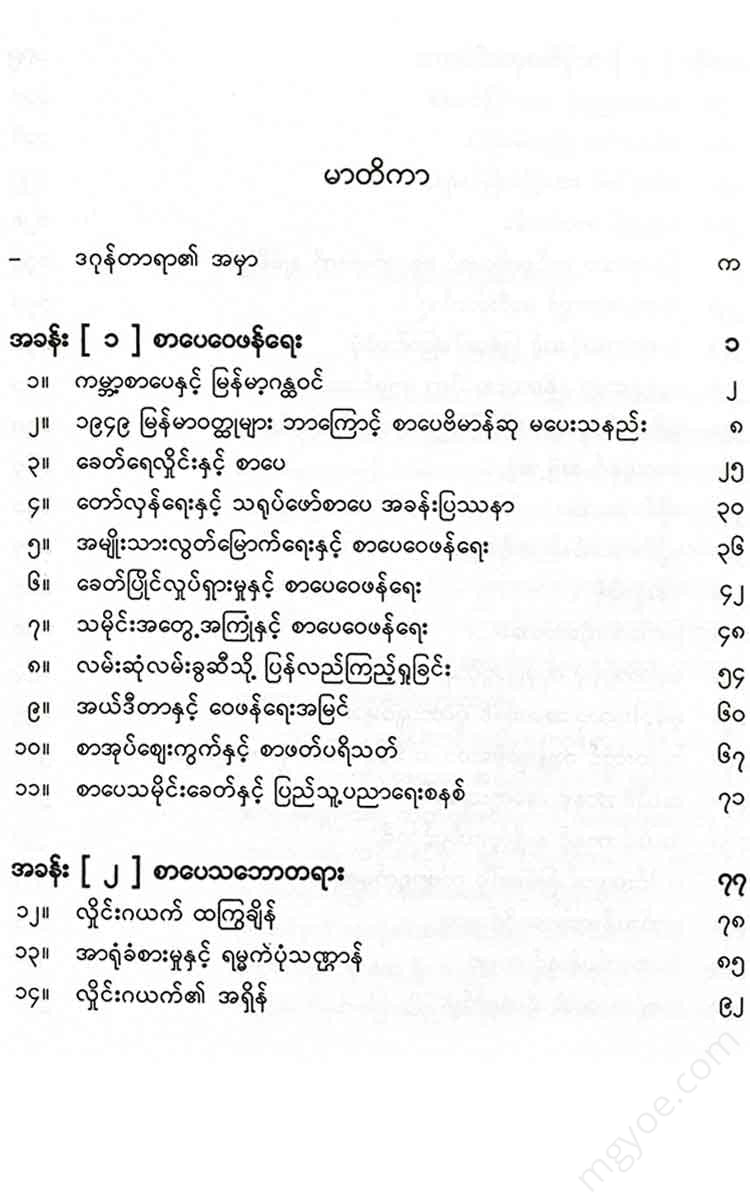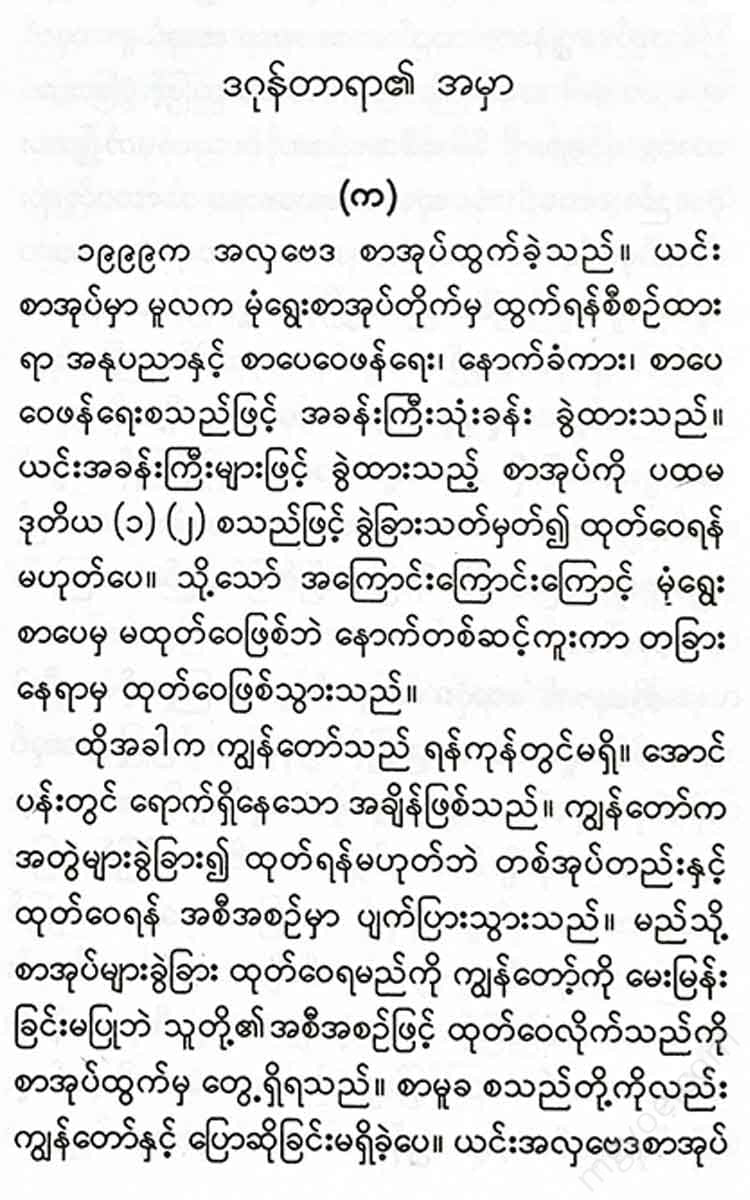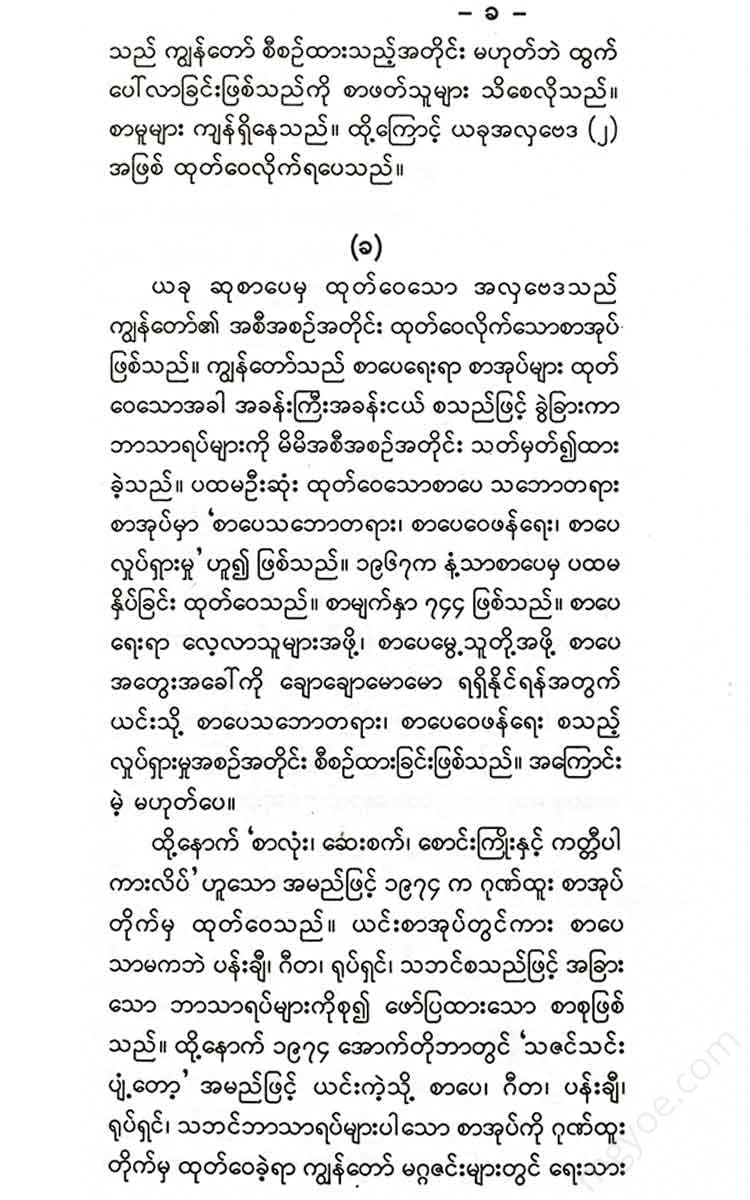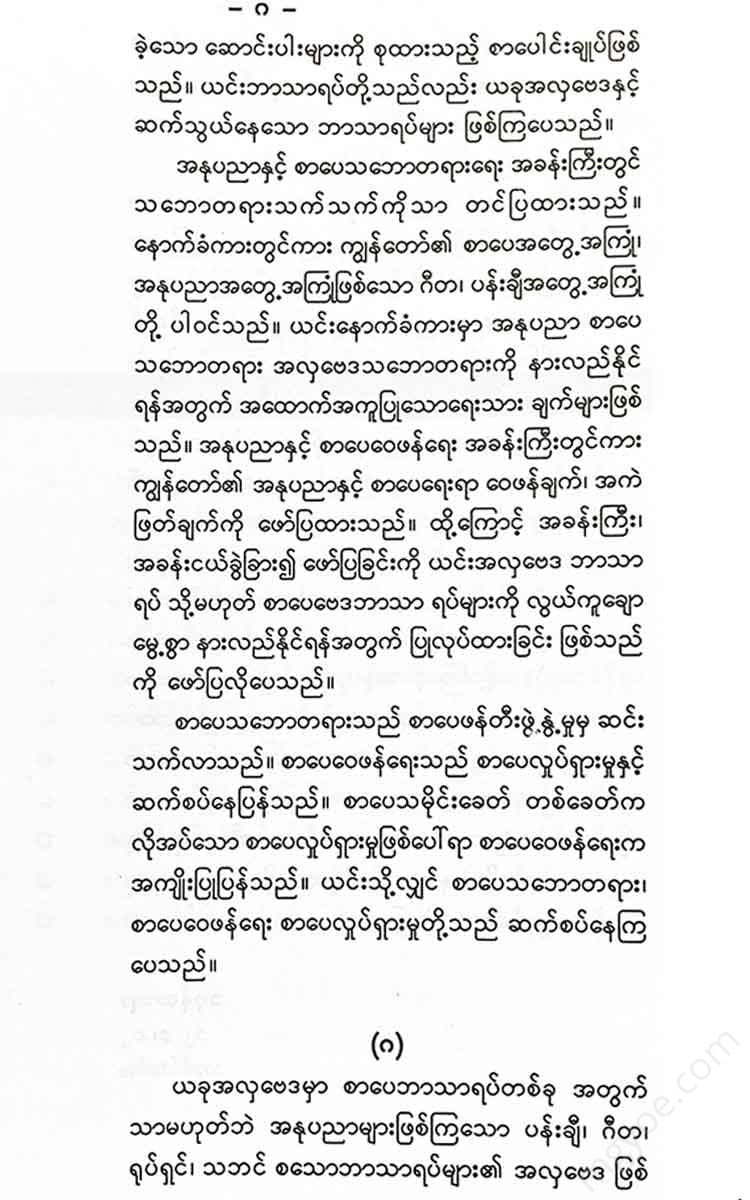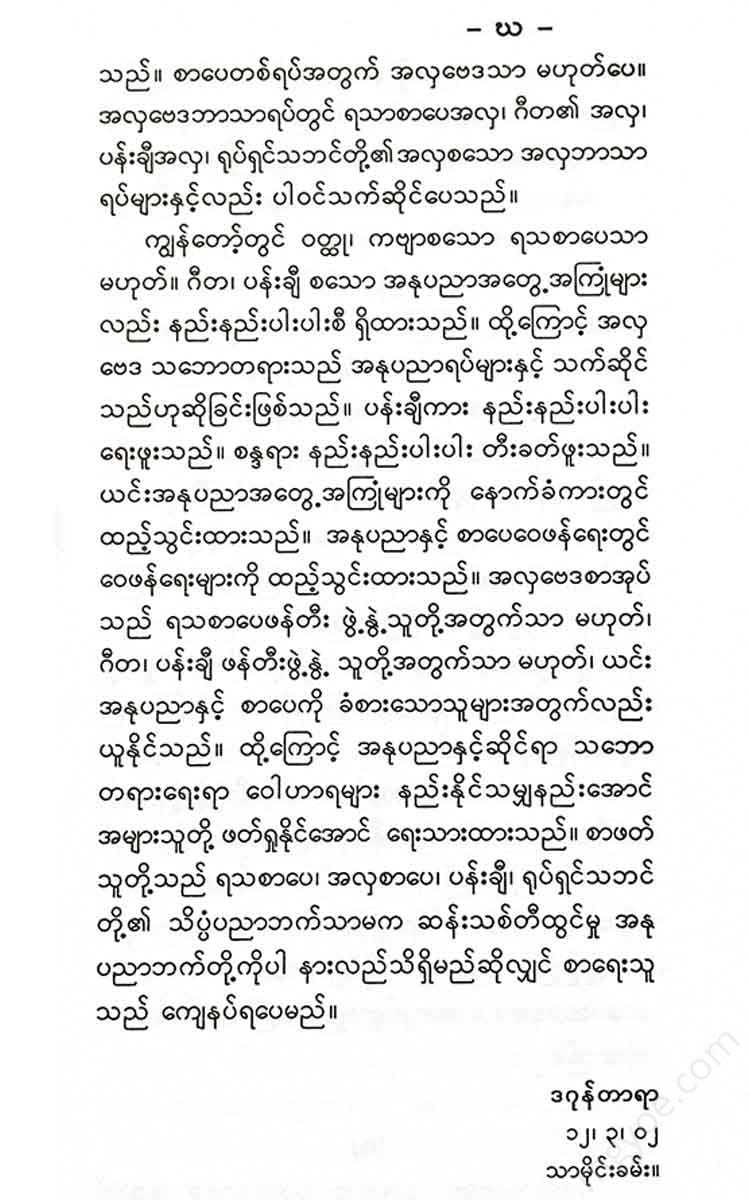စိတ်ကူးချိုချိုစာပေ
Dagontara - Aesthetics (2)
Dagontara - Aesthetics (2)
Couldn't load pickup availability
Nature shapes the world. Man is a part of the world. Therefore, nature shapes man.
On this vast earth, the ocean and the sea, the banks of the rivers, the forests and the mountains, the trees and the plants, etc., are the natural decorative materials. Under the sky, the sun, the moon, the stars, and the planets, the world is developing. There are four great natural elements that help and help nature. These four are water, earth, air, and fire. Their movements cause the weather to occur. The countries that fall in the path of the sun are tropical, and the countries that are far from the path of the sun become cold. Because the wind has to cross the sea, it turns into water vapor, rises up, and falls back down again, and falls as rain. If the natural elements that cannot be transformed into rain are defective, there is no rain. Not because the king is not in accordance with the morals. Nor because the queen is lazy. There are hot springs boiling underground, When the earth struggles against the thin ground, it moves. It is recognized as an earthquake. It is not because of the conception of a prince. Nor is it a sign of the destruction of the land.
The thunder and lightning strike the sky, the male and female elements in the sky, the lightning strikes
Where there is abundant rainfall, large, strong trees grow. Where there is no rainfall, the plains become deserts.
That's right. Nature repairs the world.
The Arabs, who always traveled by camel in the vast desert, were very good at astronomy because they could only see the setting of the moon and the stars at night. Not because they were gifted. The British, who grew up surrounded by the Atlantic Ocean and the islands of the sea, were skilled in navigation. They were often successful in naval battles. Not because they were famous. In the cold countries of Europe and America, science flourished. They often found success in inventing. Not because they had outstanding intelligence. When it was cold, people wanted to invent. They wanted to do things. They wanted to be agile and patient. They wanted to move their hands. Therefore, science flourished in cold regions. When the sun was hot, people were lazy. They were irritable. I don't want to do it, I don't want to hold it, I'm tired of moving my hands. That's why I don't hear about the development of science and inventions in the tropics. Because there is little ingenuity to invent ideas, I see that there are still uncivilized people in the tropics today. This is the inner transformation. Nature also transforms the outer appearance. In cold countries, people's skin is white. This is because they don't feel the heat well. People in tropical countries under the scorching sun are dark-skinned.
That's right. Nature shapes people.
( 2 )
At the beginning of the world, humans were no different from animals. Then humans rebelled against the natural laws and sought progress. They used their natural intelligence to think. From living in caves, they built shelters. They further developed sculpture, architecture, and architecture to decorate buildings. They carved small boats and rowed them with ropes, then they made them with planks and sails. They went up another level and went through machinery and steam power. After the Stone Age, they gradually advanced to electricity. They broke stones and made weapons and tools from iron and bronze. From swords and spears, they developed guns, bombs, and gas. They invented crafts. There were also improvements in literature. At first, there were no alphabetic symbols. Later, people were eager to write, so starting in Egypt, alphabetic symbols appeared. They wrote down the Dharma, the history, and the scriptures. They went further and wrote the Paramatma and Abhidhamma. The gradual development of literature, architecture, crafts, and arts is recognized as civilization. Over those five thousand years, the cultures of Egypt, Babylon, Greece, Persia, and China spread throughout the world. Civilizations were emerging in the East and the West. They were developing. At that time, America and Australia did not exist. The world was as if it were isolated. Our country, Myanmar, had not yet emerged. But India had been recognized.
(3)
The Burmese people have only existed for about fifteen hundred years.
The Burmese king is a descendant of the Sakyans of India. The Burmese people came from the Mongkut region of Tibet. At that time, literature was a written language. Historians write that Burmese culture developed during the Bagan period. However, it is not a true Burmese culture. If we look at the literature, we see that Burmese literature is only the Buddha's writings and historical inscriptions. A large number of Buddhist writings came to Burma from India. When the Buddha began preaching Buddhism, he preached in the Magadha language. In India, the Buddha's writings were written in Magadha and Sanskrit, so when the great Buddha Ghosa brought the Pitaka literature to Burma, he translated it from the Sinhala script into the Magadha script. From Magadha, he had to convert to Pali. At that time, the inscriptions used in Burma were Pali and Sanskrit. These languages descended into Burmese. The Sigrayan language was used during the reign of King Tagaung. Pali literature also followed the development of Burmese literature, which was free from Pali and Sanskrit influences. If we look at the classics of the time, we will find that Burmese literature is a collection of historical records and the three Pitakas. Looking at the Mya Zedi Pagoda stone inscriptions and the Letsae Sya Pagoda stone inscriptions, we will find evidence that they are historical records. The rest of the literature is Buddhist literature.
The writings that were written with one's own imagination were almost rare in the Bagan period. Only the Anantathuriyya Aghathala Linka and the short version of the Poppa Nattaung Bwe Linka can be found. If we carefully consider the literature of the Pinya, Sagaing, and Inva periods, we find that they are not writings that were written with one's own imagination, but are Buddhist literature. The love and nature of the love and nature of the love and nature of the love and nature are almost nonexistent. Of the three types of scriptures, the Sutta, Vinaya, and Abhidhamma, the Burmese studied the Sutta with great enthusiasm. They selected and selected the Jatakas from the Sutta and built the great structure of Burmese literature. Those who liked the fine and beautiful study of the Sutta and the Vingala Sangya and composed them in poetry. Brief, Those who wanted to summarize the text and make it understandable to the public without wasting time wrote in prose. The texts they composed were only the Jātaka Nipaṭas. The most prominent Nūṭas appeared in the Inva period. It was found that many of these Nūṭas were not works of personal imagination but were extracts from five hundred and fifty Jātaka Nipaṭas.
Therefore, Burmese literature is so poor in imagination that when they try to use their own intelligence to come up with ideas, they are hit in the head with the slogan “Do not abandon the past.” The Burmese do not like to think about thinking only by thinking about ancient literature. Burmese literature is outdated and cannot enter the world classics. It is never heard of a Burmese novel being world famous and winning the Nobel Prize. In Burmese literature, there is a dearth of literature that serves the interests of the poor and the peasants, called the proletariat. We have found novels that serve the interests of the poor by great writers from Russia, Italy, England, and the Philippines. When the French Revolution of 1789 broke out, Burma was under the rule of the absolute monarchy. Letters praising the king's glory, letters expressing personal feelings about his descent from the Sun God, and letters expressing love and truth to the Buddha were appearing in small numbers. At that time, Bol Taya and Rasu had already written books for the poor. Kalamat and Angel Sathu had also published books for the workers to the world. There was no mention of books for the poor in Burmese literature. Only the depiction of the world of the rich and the world of the king was found.
Therefore, it is necessary to revolutionize Burmese literature to modernize it. We should analyze world literature and start translating and devising works that reflect worldviews and the interests of the poor and working class, and then introduce them into the classics.
(As mentioned elsewhere in this article, the Vingala Sangkyana is an Indian literary work.)
Pinya Magazine, 1940
